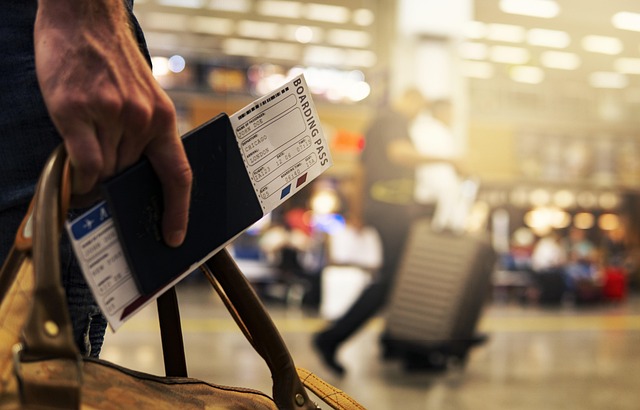Flight Booking Tips for Planning Cost-Effective Travel
Flight booking requires flexibility and research. Learning about airfare trends, seasonal timing, and budget strategies helps travelers plan smarter, avoid peak pricing, and enjoy more affordable, well-organized trips while making informed travel decisions.

Navigating the world of air travel pricing requires a combination of research, flexibility, and awareness of industry patterns. Airlines adjust fares based on numerous factors including demand, seasonality, route popularity, and booking windows. By understanding these dynamics and applying strategic planning methods, travelers can identify opportunities to secure more economical flight options without sacrificing convenience or reliability.
Smart Flight Booking Strategies
Successful flight booking begins with comprehensive research across multiple platforms. Comparison websites aggregate fares from various airlines and travel agencies, allowing travelers to evaluate options side by side. Setting up price alerts for specific routes enables monitoring of fare fluctuations over time. Flexibility with travel dates, departure times, and even nearby airports can reveal significant price differences. Midweek flights, particularly Tuesdays and Wednesdays, often carry lower fares compared to weekend departures. Additionally, considering connecting flights instead of direct routes may reduce costs, though this requires balancing savings against additional travel time. Loyalty programs and airline credit cards can provide accumulated benefits that translate into discounted or complimentary travel over time.
Timing and Fare Insights
The relationship between booking timing and ticket prices represents one of the most significant factors in travel planning. Industry analysis suggests that domestic flights within the United States typically offer optimal pricing when booked approximately 1 to 3 months before departure, while international travel often benefits from booking 2 to 8 months in advance. Last-minute bookings generally carry premium pricing due to reduced seat availability and higher demand from business travelers. Seasonal patterns also influence costs substantially. Peak travel periods including summer vacation months, major holidays, and spring break command higher fares, while shoulder seasons such as late fall and early spring often present more economical options. Monitoring fare trends for specific routes over several weeks provides valuable insight into pricing patterns and helps identify the ideal purchase window.
Planning Affordable Air Travel
Affordable air travel planning extends beyond simply finding the lowest advertised fare. Hidden fees for checked baggage, seat selection, and onboard services can substantially increase total costs. Budget carriers may advertise attractive base fares but charge separately for amenities that traditional airlines include. Calculating the true total cost requires accounting for all potential fees associated with each booking option. Packaging flights with accommodations through travel booking platforms sometimes yields bundled discounts, though independent price verification remains advisable. Flexible travelers might explore alternative airports within reasonable distance of their destination, as smaller regional airports occasionally offer lower fares despite potential ground transportation costs. Additionally, considering one-way tickets on different airlines rather than round-trip bookings on a single carrier can occasionally produce savings, particularly when combining budget and traditional carriers strategically.
Real-World Cost Insights and Provider Comparison
Understanding the landscape of flight booking platforms and their typical cost ranges helps travelers make informed decisions. The following comparison illustrates representative providers and general cost considerations for domestic United States travel.
| Platform/Provider | Service Type | Key Features | Cost Estimation |
|---|---|---|---|
| Google Flights | Search Engine | Comprehensive search, price tracking, flexible date calendar | Free to use; actual ticket prices vary |
| Kayak | Metasearch | Price alerts, fare predictions, flexible search options | Free to use; actual ticket prices vary |
| Skyscanner | Metasearch | Global coverage, entire month search, price comparison | Free to use; actual ticket prices vary |
| Direct Airline Sites | Booking Platform | Loyalty benefits, no third-party fees, direct customer service | Competitive pricing, occasional exclusive deals |
| Expedia | Online Travel Agency | Package deals, rewards program, bundled discounts | Comparable pricing with potential bundle savings |
Prices, rates, or cost estimates mentioned in this article are based on the latest available information but may change over time. Independent research is advised before making financial decisions.
Domestic round-trip flights within the United States typically range from $150 to $600 depending on distance, timing, and route popularity, while international flights vary considerably based on destination and travel class. Budget carriers may offer base fares 20-40% lower than traditional airlines, though total costs after fees may narrow this gap.
Additional Cost-Saving Considerations
Beyond basic booking strategies, several supplementary approaches can enhance affordability. Clearing browser cookies or using incognito mode when searching prevents potential dynamic pricing based on search history. Subscribing to airline newsletters and following carriers on social media platforms provides early notification of flash sales and promotional offers. Error fares, though rare and sometimes cancelled, represent significant savings opportunities for vigilant travelers who act quickly. Travel during off-peak hours, such as early morning or late evening flights, frequently costs less than prime-time departures. For frequent travelers, accumulating miles through strategic credit card use and loyalty program participation can eventually offset significant portions of travel expenses.
Balancing Cost with Convenience
While cost considerations drive many booking decisions, balancing affordability with practical travel needs ensures satisfactory experiences. Extremely early or late flight times may offer savings but create logistical challenges with ground transportation or accommodation check-in times. Multiple connections reduce fares but increase travel duration and potential disruption risks. Ultra-budget carriers with restrictive baggage policies may prove less economical for travelers requiring checked luggage. Evaluating the complete travel experience, including time investment and potential stress factors, helps determine whether the lowest fare truly represents the best value. Flexibility remains the most powerful tool for cost-conscious travelers, but practical constraints deserve consideration in final booking decisions.
Strategic flight booking combines research, timing awareness, flexibility, and comprehensive cost evaluation. By applying these principles and remaining informed about industry patterns, travelers can consistently identify opportunities to reduce air travel expenses while maintaining quality travel experiences suited to their individual needs and preferences.




